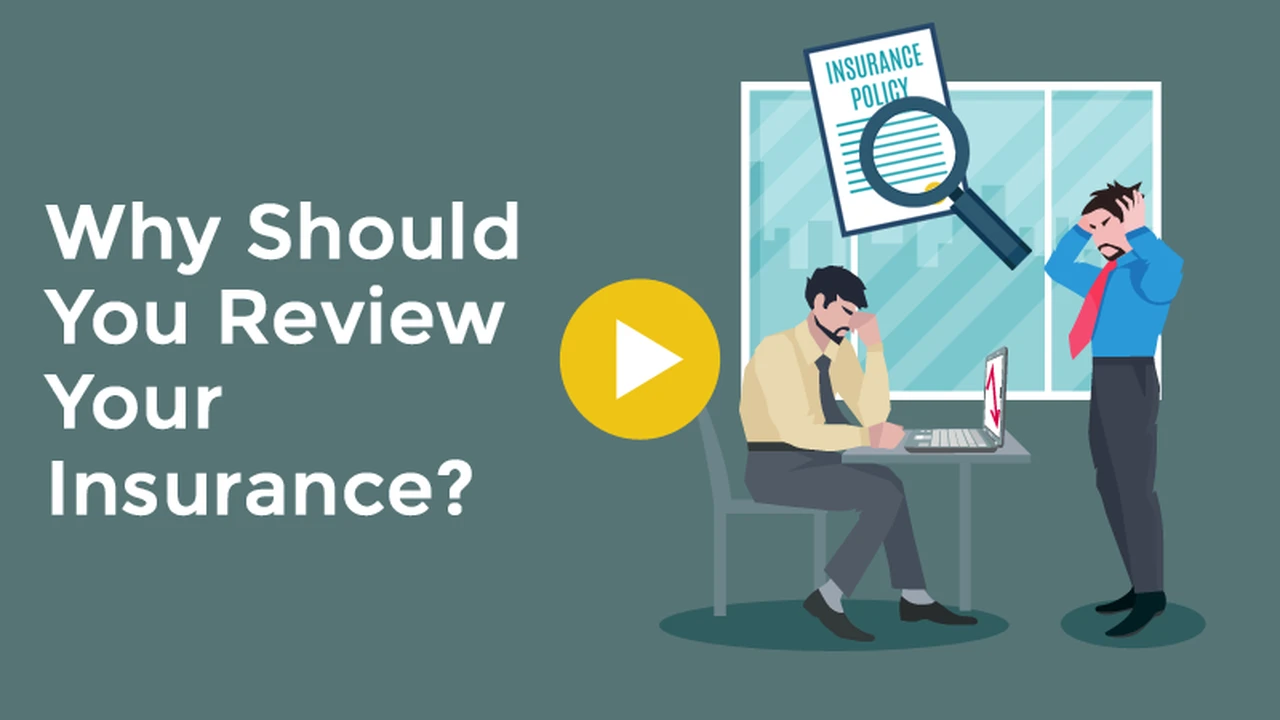Reviewing Your Policy: Ensure Accurate Coverage

Understanding Your Car Insurance Policy A Comprehensive Guide
Okay, let's dive right in! Your car insurance policy isn't exactly beach reading, is it? But understanding it is absolutely crucial. Think of it as your financial safety net when things go wrong on the road. Ignoring it is like driving blindfolded – you *might* be okay, but the odds are definitely stacked against you. This isn't about just paying a bill; it's about knowing what you're actually covered for, identifying potential gaps, and making sure your policy truly reflects your needs. We'll break down the jargon and walk you through everything you need to know to ensure you have the right coverage at the right price.
Why Reviewing Your Car Insurance Policy is Essential Regular Policy Checkups
Why bother reviewing your policy? Life changes! You might've moved, changed jobs, gotten married, bought a new car, or even improved your driving record. All these things can impact your insurance needs and premiums. An outdated policy could leave you underinsured, meaning you'll be paying out of pocket for damages in an accident. Or, you could be overpaying for coverage you no longer need. Regular reviews – at least annually, or whenever a major life event occurs – are key to keeping your policy up-to-date and optimized for your current situation. Think of it like a health checkup for your finances.
Decoding Your Car Insurance Policy Key Terms and Definitions
Alright, let's tackle the jargon. Here are some key terms you'll find in your policy and what they actually mean:
- Liability Coverage: This covers damages you cause to others in an accident. It includes both bodily injury (medical expenses) and property damage (car repairs, etc.). This is arguably the most important coverage to have, as it protects you from potentially devastating lawsuits.
- Collision Coverage: This covers damage to your car if you collide with another vehicle or object, regardless of who's at fault. It's especially useful if you have a newer car or one that's expensive to repair.
- Comprehensive Coverage: This covers damage to your car from things other than collisions, such as theft, vandalism, fire, hail, or hitting an animal. It's a good idea to have this, especially if you live in an area prone to these types of events.
- Uninsured/Underinsured Motorist Coverage: This protects you if you're hit by a driver who doesn't have insurance or doesn't have enough insurance to cover your damages. Unfortunately, this is a common situation, so this coverage is well worth considering.
- Deductible: This is the amount you pay out of pocket before your insurance coverage kicks in. A higher deductible usually means a lower premium, but you'll have to pay more if you file a claim.
- Premium: This is the amount you pay regularly (monthly, quarterly, annually) for your insurance coverage.
Understanding these terms is the first step to ensuring you have the right coverage.
Assessing Your Coverage Needs Determining Adequate Protection
How much coverage do you really need? That depends on several factors, including your assets, your risk tolerance, and your state's minimum requirements. Here's a breakdown:
- Liability Coverage: Consider your assets. If you have significant savings, a home, or other valuable possessions, you'll want higher liability limits to protect them from lawsuits. Experts often recommend at least $100,000/$300,000 for bodily injury liability and $50,000 for property damage liability. Even higher limits might be advisable if you have substantial assets.
- Collision and Comprehensive Coverage: If you have a loan on your car, your lender will likely require you to have these coverages. Even if you own your car outright, consider the cost of repairing or replacing it. If you can't afford to do so out of pocket, these coverages are a good idea.
- Uninsured/Underinsured Motorist Coverage: This is often overlooked, but it's crucial. Consider the potential cost of medical bills and lost wages if you're injured in an accident caused by an uninsured or underinsured driver. Matching your liability limits for this coverage is a smart move.
Don't just go with the minimum required coverage. Take the time to assess your individual needs and choose coverage levels that provide adequate protection.
Identifying Potential Gaps in Your Car Insurance Policy Coverage
Even with seemingly comprehensive coverage, gaps can exist. Here are some common ones to watch out for:
- Gap Insurance: If you owe more on your car than it's worth (common with new cars), gap insurance can cover the difference if your car is totaled. Without it, you'll still be responsible for paying off the loan even though you no longer have the car.
- Rental Car Reimbursement: This covers the cost of a rental car while your car is being repaired after an accident. It's a lifesaver if you rely on your car for work or other essential activities.
- Roadside Assistance: This covers services like towing, jump-starts, and tire changes. It can be a convenient and affordable alternative to a separate roadside assistance plan.
- Custom Equipment Coverage: If you've added aftermarket accessories to your car (e.g., custom wheels, sound system), make sure your policy covers them. Standard policies often don't.
- Business Use Exclusion: If you use your car for business purposes (e.g., delivering goods, driving for a ride-sharing service), your personal auto policy may not cover you. You may need a commercial auto policy.
Read the fine print of your policy to identify any potential exclusions or limitations.
Comparing Car Insurance Quotes Shopping Around for the Best Rates
Don't just stick with the same insurance company year after year. Shopping around can save you a significant amount of money. Get quotes from multiple insurers and compare them carefully. Pay attention to not just the premium, but also the coverage levels, deductibles, and customer service reputation. Online comparison tools can make this process easier.
Leveraging Discounts to Lower Your Car Insurance Premiums Discount Opportunities
Many insurers offer discounts for things like:
- Safe Driving Record: A clean driving record is the best way to lower your premiums.
- Good Student Discount: Students with good grades often qualify for discounts.
- Multi-Policy Discount: Bundling your car insurance with other policies (e.g., homeowners insurance) can save you money.
- Vehicle Safety Features: Cars with anti-lock brakes, airbags, and other safety features often qualify for discounts.
- Low Mileage Discount: If you don't drive much, you may be eligible for a discount.
- Affiliation Discounts: Some insurers offer discounts to members of certain organizations or alumni associations.
Be sure to ask your insurer about all available discounts.
Understanding the Impact of Credit Score on Car Insurance Rates Credit Score Car Insurance Connection
In many states, your credit score can impact your car insurance rates. Insurers argue that people with poor credit scores are more likely to file claims. While this practice is controversial, it's important to be aware of. Improving your credit score can potentially lower your insurance premiums.
Specific Product Recommendations and Comparisons
Let's get practical. Here are some examples of products and scenarios:
Scenario 1: Young Driver Needs Affordable Coverage
Problem: Young drivers face high insurance rates due to inexperience.
Solution:
- Usage-Based Insurance (UBI): Companies like Metromile and Root offer UBI policies that track your driving habits (mileage, speed, braking) through a mobile app or device. If you drive safely and not excessively, you can save significantly. Metromile charges a base rate plus a per-mile fee, making it ideal for low-mileage drivers. Root uses your driving data to determine your initial rate and rewards safe drivers with lower premiums.
- Consider increasing the deductible: A higher deductible will lower the premium, but you'll need to be prepared to pay more out of pocket if you have an accident.
- Take a defensive driving course: Many insurers offer discounts for completing a defensive driving course.
- Stay on your parents' policy (if possible): This can be a more affordable option than getting your own policy.
Comparison:
| Feature | Metromile | Root |
|---|---|---|
| Pricing Model | Base Rate + Per-Mile Fee | Driving Data-Based Premium |
| Ideal For | Low-Mileage Drivers | Safe Drivers |
| Availability | Limited States | Expanding Availability |
| Typical Monthly Cost (Example) | $50 base + $0.06/mile (Varies widely) | Varies based on driving data |
Scenario 2: Family with Multiple Cars
Problem: Need to insure multiple vehicles at a reasonable price.
Solution:
- Multi-Car Discount: Most major insurers (State Farm, Allstate, Progressive, Geico) offer significant discounts for insuring multiple vehicles with the same company.
- Consider raising deductibles on some vehicles: If one car is older and less valuable, you could raise the deductible on that vehicle to lower the overall premium.
- Shop around for the best multi-car rate: Get quotes from several insurers specifically for multiple vehicles.
Comparison:
| Insurer | Multi-Car Discount (Typical) | Customer Service Rating |
|---|---|---|
| State Farm | Up to 20% | Generally High |
| Allstate | Varies | Generally High |
| Progressive | Varies | Mixed |
| Geico | Up to 25% | Generally Good |
Pricing: Multi-car discounts vary significantly based on location, driving history, and other factors. It's essential to get personalized quotes.
Scenario 3: Driver with a DUI
Problem: DUI dramatically increases insurance rates.
Solution:
- Shop around for specialty insurers: Some insurers specialize in providing coverage to drivers with DUIs. These companies may offer more competitive rates than standard insurers. Examples include The General and Direct Auto Insurance.
- SR-22 Filing: You'll likely need to file an SR-22 form with your state, which proves that you have the required minimum liability coverage.
- Consider a smaller, less expensive car: The type of car you drive can affect your insurance rate.
- Complete a DUI education program: Some insurers may offer discounts for completing a DUI education program.
Comparison:
| Insurer | Focus | Cost (Typically) |
|---|---|---|
| The General | High-Risk Drivers | Higher than average |
| Direct Auto Insurance | Non-Standard Insurance | Higher than average |
Pricing: Expect to pay significantly higher premiums after a DUI. Rates can vary widely depending on the severity of the offense and your driving history.
Reviewing Your Policy Regularly and Making Adjustments Continuous Coverage Optimization
Reviewing your policy isn't a one-time thing. Make it a habit to review it at least once a year, or whenever a major life event occurs. Life changes, and your insurance needs to change with them. By staying proactive and informed, you can ensure you have the right coverage at the best possible price.
So, there you have it! A comprehensive guide to reviewing your car insurance policy. Remember, understanding your coverage is key to protecting yourself and your finances.
:max_bytes(150000):strip_icc()/277019-baked-pork-chops-with-cream-of-mushroom-soup-DDMFS-beauty-4x3-BG-7505-5762b731cf30447d9cbbbbbf387beafa.jpg)






